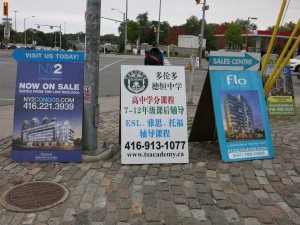In the last couple of months I have read several articles that provide insights into the importance of place in the context of contemporary mobility. Some of these include survey and census information about how Americans relate to local areas and how many of them changed their place of residence in one year. This information is important because discussions about place mostly approach it in terms of particular, long-term local experiences, giving the impression that these are the norm. This may be the case for a small majority but it seems that a large minority of the population want to move elsewhere and every year several tens of millions act on this. Place experiences for them are of many places and multi-centred.
My interest was first aroused by an article in the Atlantic Monthly in March “Staying Close to Home , No Matter What,” which discusses the inclination of Americans not to move away from where they grew up. This is in fact a commentary on a recent poll in the Heartland Monitor that examined American’s experiences in their local areas, including their opinions on the local economy, businesses, and institutions.
The Heartland Monitor poll (undertaken by Allstate/National Journal) asked 1000 people whether their local area is best described as a small city or town (41%), a suburb (22%), a big city (19%) or a rural area 17%); these are not perhaps what many might consider as local areas. Nevertheless, and regardless of what sort of local area they lived in or their demographic or socio-economic group, respondents rated their local area very positively in terms of its quality of life and environment, and higher than the country in terms of political leadership. Perhaps what is of special significance from the perspective of place is that 54% of the respondents lived in the area where they had grown up (34% had never moved away while 19% had left and returned)., and almost half of those had lived in the same area for 21 or more years.
It was these percentages that led the author of the Atlantic Monthly article to interpret the Heartland Monitor poll as indicating that Americans generally like to stay put. Well, yes, strictly speaking the sample of 1000 is sufficient to make reasonably confident extrapolations for the American population as a whole, and to suggest that just over half the US population likes stays close to home, which is to say in the same city, town or suburb. But it is important to put numbers to this. The U.S. population is about 320 million, so 54% means that roughly 170 million want to stay in their local area. On the other hand, about 150 million do not, so it seems almost half Americans are restless, and for them moving elsewhere is almost as big an attraction as staying put.
A U.S. Census report in March 2015 “Staying or Going” gives further details about staying close to home or moving elsewhere. It concludes from various data that about 10 per cent of Americans, (specifically 10 million households or about 35 million people) are dissatisfied with where they live and would like to move because of the poor quality of their housing or their neighborhood, or concerns about local safety and inadequate public services. The report indicates that while In 2010-11 only about 2 million of those dissatisfied households actually did move, another 11 million households moved for other, presumably more positive, reasons. While there is some evidence that residential satisfaction is increasing and rates of moving are declining, nevertheless about 35 million Americans move to a new place every year. In each decade that is the equivalent of the entire population of the United States moving to some other place in the country.

Multicentred place experiences conveyed in real estate signs in a suburban area of Toronto popular with Chinese immigrants, 2013
Another U.S. Census Report in March 2015 “Packing it Up” suggests that 1 in 9 people changed residences in 2013-2014 (in 1948 it was 1 in 5, so this has declined over the last 60 years). Of the 35 million who moved, 23 million stayed in the same county, another 6.5 million moved to a different county in the same state, 1.2 million moved to a different state, 3.4 million moved to a different part of the U.S. and 1.1 million moved abroad. While this supports the general notion the most people prefer to stay close to home (in the same county or same state), it is nonetheless the case that in a single year 6.7 million Americans made substantial moves. To put it rather differently,at the county and state level there appears to be a constant place churning as people move to other neighborhoods or cities, while at the national level the equivalent of the population of Philadelphia or Dallas moves to another state or region each year. For some people place may be an enduring source of focused experiences, but clearly for many millions of families and individuals it is what Luch Lippard in her book The Lure of the Local refers to as multi-centred.
Multi-centred place experience is also common at an international scale. The “Packing it Up” report notes than 1.1 million Americans moved abroad in 2013-14. If this is sustained it amounts to 10 million in a decade, the equivalent of the population of Chicago – an American diaspora spread around the globe. This not exceptional. With the waves of mass migration that have occurred over the last 70 years there many diasporas have been created, possibly more than 250 million people who have allegiances to several places and counties. The article “Long-Distance Parenting” by Ana Santos in the March 2015 Atlantic Monthly examines aspects of the Filipino diaspora. A state-encouraged policy of labor migration was introduced by the Philippines in the 1970s as a way to deal with high levels of unemployment and there are now about 10 million Filipino migrant workers living in other countries. Many of these live away from home for years or decades. They maintain some connection with their children and families by sending remittances and also balikbayan boxes – gift packages filled with goods and presents. Even though they have strong allegiances to their place of origin their lives are multi-centred.
I do not regard with dismay these reports of a large proportion of the population either moving or wanting to move elsewhere. I do not think they should be interpreted as evidence that millions of people are unplaced or disembedded. Instead I think they reveal that place and place experiences has to be understood as more than lifelong or long-term dwelling somewhere. For many people place experiences are by choice multi-centred, they consist of relatively short-term encounters. Whether this makes them shallower or less authentic in some way is an open question, which I expect to explore in future posts.

